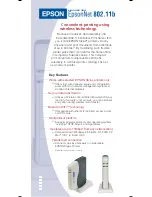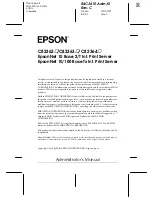
Chapter 3
Troubleshooting
Troubleshooting Using Online Support Tools
22
Event Monitoring Service
Event Monitoring Service (EMS) is the framework for monitoring hardware and reporting events. You can
use EMS to eliminate most undetected hardware failures that cause data loss or interruptions of system
operation. You can monitor a hardware device (such as a disk) for the occurrence of any unusual activity
(called an event). When an event occurs, it is reported by a variety of notification methods such as e-mail.
Event detections are handled automatically with minimal involvement on your part.
The following monitors are available:
•
CMC monitor
•
UPS monitor
•
FC hub monitor
•
FC switch monitor
•
Peripheral status monitor
•
Memory monitor
EMS comes with your HP-UX operating system. To bring up the event monitoring main menu, execute the
following command at the shell prompt:
/etc/opt/resmon/lbin/monconfig
From the list of main menu selections, choose:
(E) Enable Monitoring
Management Processor
The management processor (MP) interface provides diagnostic and configuration capabilities. By viewing the
system logs you can determine and solve problems affecting your server. To access your MP interface and
system logs, perform the following steps:
NOTE
The MP interface must be accessed from a terminal console that is attached to the MP via the
MP LAN or MP remote serial connector. The MP is always available for troubleshooting,
regardless of the state of your system, as long as there is AC power applied to your server.
Step 1. If necessary, press
CTRL+B
to access the MP interface.
Step 2. Log in with proper user name and password.
Step 3. Enter
cl
to display the console logs. This log displays console history from oldest to newest.
Step 4. Enter
sl
to display the system logs. The system logs consist of:
•
System event
•
Forward progress
•
Current boot
•
Previous boot
•
Live events
•
Clear SEL/FPL logs
















































